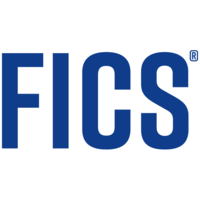
Application programming interfaces (APIs) are software-to-software interfaces that enable applications to easily communicate back and forth without the need for direct user intervention. An API may be designed to query data or update a database, initiate a process, or add functionality to a software application. Sometimes it is easier to use an API than develop new functionality from scratch.
APIs have been in use since the late 1960s, but the power and design behind them increased in complexity beginning with the tech boom of the early 2000s. Around that time, companies such as Salesforce, eBay and Amazon launched API capabilities to interface with other tools needed to expand their reach. APIs have become so ubiquitous that many users have no idea that many popular apps, such as Google Maps, are API-driven to combine several important functions into one useable interface.
APIs are quickly becoming a vital tool for mortgage lenders, who recognize them as a critical technology that provides immense potential to automate processes, improve opportunities and accuracy, and reduce costs and workloads, according to Fannie Mae.
To learn more about the many benefits of APIs, MortgageOrb recently interviewed Jeff Williams, the API team lead for mortgage software firm FICS.
Q: Why are APIs essential to today’s mortgage professionals?
Williams: The mortgage industry is becoming increasingly regulated and complex. One application may be insufficient to meet a lender’s and servicer’s needs. APIs support integrations between software programs, allowing mortgage professionals to create a comprehensive technological ecosystem that supports automatic communication between systems.
Increased automation provides a wealth of benefits, including fewer errors, reduced staff hours and monetary costs, and more seamless operations. APIs help lenders and servicers streamline operations and improve communication, thereby delivering better customer service.
Q: What are the benefits of APIs?
Williams: APIs offer convenience and time savings via workflow automation. Mortgage servicers can use APIs to automate reports and programs, thus saving time and resources, eliminating after-hours and weekend work, and reducing mistakes caused by human error.
APIs enable secure connections between loan origination and servicing software, core systems, credit bureaus and government-sponsored enterprises, eliminating the need for manually inputting data in each system. APIs also let mortgage professionals seamlessly order fulfillment services from various service providers or share data across platforms, allowing users to remain in one system to provide support to their customers.
APIs can be used both internally and externally to streamline information transfers. An internal API may help to simplify origination or servicing, while an external API allows borrowers to obtain or submit information. For instance, end-of-day process automation handled via FICS’ Mortgage Servicer API or Commercial Servicer API is an internal API. Borrower-facing web applications that allow borrowers to view their mortgage information or make online payments are external APIs.
In the case of mortgage servicing software, APIs are commonly used in conjunction with scheduling tools to automate the execution of mortgage servicing software programs, such as end-of-day and end-of-month reports, investor closeout, monthly loan statements and custom programs such as core interfaces. The API should have the ability to notify IT staff of the successful execution of the task after it is completed.
Q3. How can APIs help mortgage professionals working remotely?
Williams: One of the biggest challenges lenders have faced because of the COVID-19 pandemic is the increase in remote workers. By using APIs, employees can greatly reduce the amount of interaction required in a system.
Rather than needing to access a remote server or log into a specific remote program, lenders can use an API to automatically send reports to phones or email, eliminating the need to tap into another machine to run and verify results. This saves time and increases accuracy, helping remote employees work more efficiently and effectively.
Q4. How can a loan servicing API be used with a core banking system?
Williams: The mortgage servicing software and core banking system create data files that can be transferred in lieu of a direct connection. This allows tasks to be initiated remotely via APIs that enable a scheduling tool or application to exchange data seamlessly, rather than being run manually.
Interfacing with a core system is critical because while core systems support many products, mortgage servicing functionality is often limited or subpar. Core systems inevitably require staff to perform many manual tasks due to limitations within the core. Mortgage servicing software and APIs can automate those manual processes, streamlining everything from customer-focused tasks to investor reporting.
Q5. How do borrowers benefit from APIs?
Williams: Today’s borrowers desire transactions that are as quick and convenient as possible. By utilizing APIs, lenders and servicers can expedite their processes and eliminate much manual labor, allowing them to more quickly and accurately deliver updated statements and loan information to borrowers via a consumer-facing website. Borrowers gain immediate, real-time access to their specific loan data and statements and can conveniently make online payments 24/7.
Q6. How can mortgage professionals decide whether they need an API?
Williams: Most mortgage professionals will benefit from implementing APIs, as APIs can help them more easily build on existing functionality and automate processes to create a custom solution, without the need to switch or upgrade platforms. To see if APIs may be right for one’s business, one should answer the following basic questions:
- Are there any repetitive tasks that my team and I must take care of every day?
- Is there information I’d like to share with my customers that isn’t accessible in real time today?
- Is there any additional functionality or workflow we’d like to add to one of the applications we’re currently using?
- Would I like to use automation to give my staff more time to better serve the customer?
If a lender or servicer answered “yes” to any of the above questions, the institution would likely benefit from an API.












